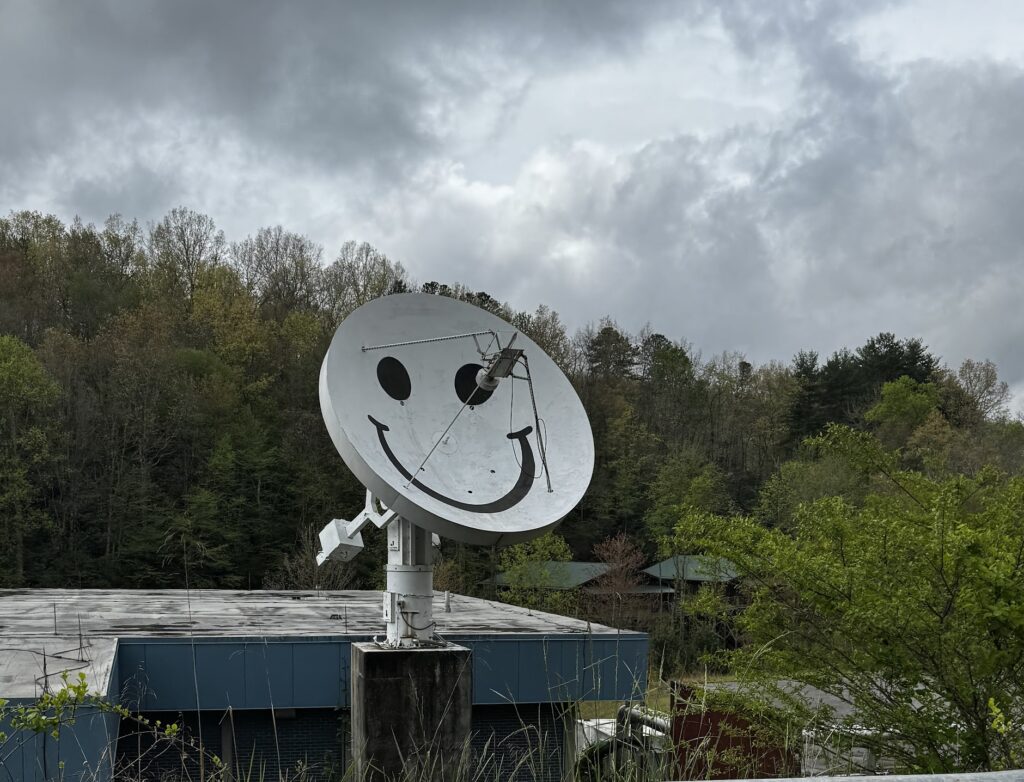I gave you a little preview of Pisgah Astronomical Research Institute when I revealed that it was the Comments for a Cause recipient for May here. Chris, Aaron and I spent the morning touring the place for their Space Day 2024. The facility opens up to the public at various times during the year and it is really the best time to be able to take a tour and get a glimpse into some of the things that go on.
But first– watching the 26M radio telescope move was pretty amazing. These things are HUGE.
.
.
.
A little background history is probably important. In 1964 NASA opened the Rosman Tracking Station. As one of the two best-equipped stations in NASA’s Spacecraft Tracking And Data Acquisition Network (STADAN), Rosman played a vital role in the space program, communicating with satellites and manned space flights as they passed over the East Coast.
In 1967, the western 26m radio telescope received world’s first color photo of the full Earth from space. Then in 1967, Rosman’s telescopes receive the first TV transmission from space.
Another important thing happened in 1981 when the Department of Defense began to use the site to collect satellite data and intercept Russian satellite communications throughout the Cold War. The “smiley” face on PARI’s 4.6m radio telescope was painted as a joke during the height of the Cold War. The Soviet Union was interested in the DOD base and often sent satellites to photograph the campus. Each Soviet photo contained a “smiley face” as a friendly wave.

.
In 1995 the Department of Defense stopped using the facility. After several years of inactivity at the site, the government decided to dismantle the facility and leave it to be maintained by USDA Forest Service. Recognizing the tremendous value and potential for the site, Don and Jo Cline stepped in. In 1998, the Clines acquired the 200-acre facility and the Pisgah Astronomical Research Institute (PARI) was born:, a not-for-profit public organization dedicated to educating future generations of scientists. The rest is history, as they say, and the facility serves as a place that continues to educate.
.
There was plenty to do to keep all ages occupied from a space walk, planetarium , museum complete with a huge collection of rocks and gems, to some special behind the scenes tours.
We were fortunate enough to meet Thurburn Barker who is the director of the APDA, Astronomical Photographic Data Archive, which is located on site. Thurburn gave us a private tour and we saw where 420,000 astronomical photographic plates and films from observatories around the world are stored. These glass plates are stored and available to be used for research and data collection. The preservation of these plates and the cataloging of them into online database is an important step in the scientific world. Thurburn is an authority and we got quite an in depth and interesting tour of what the plates look like and their importance.
PARI offers a variety of things including summer exploration camps , school field trips and community events such as the event that we attended. It really was a fun day and even if I didn’t understand all the scientific information as well as Chris and Aaron, I was so glad we went.
Their website is full of great information and even an online store so if you want to know any more about PARI and all that it has to offer make sure to click here.












